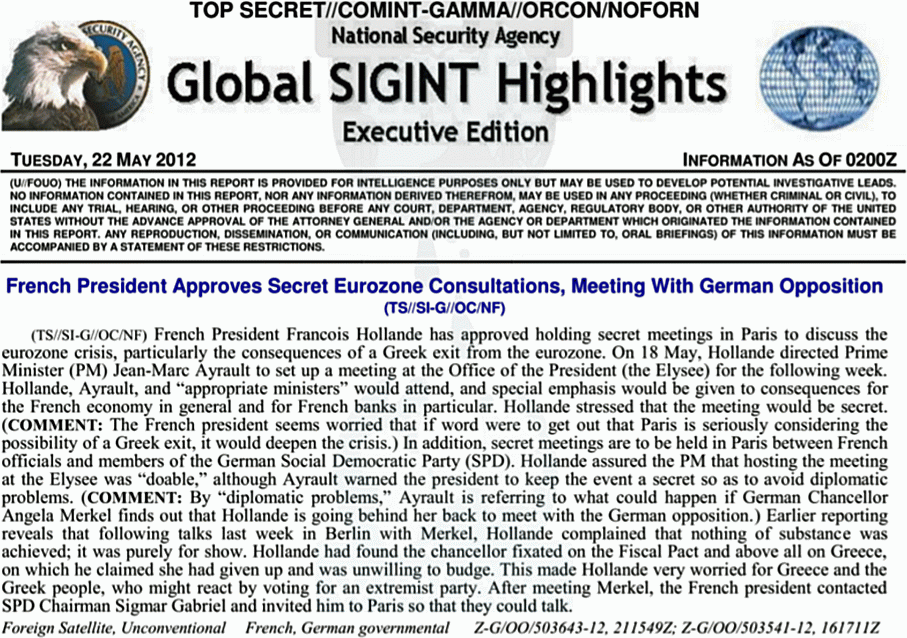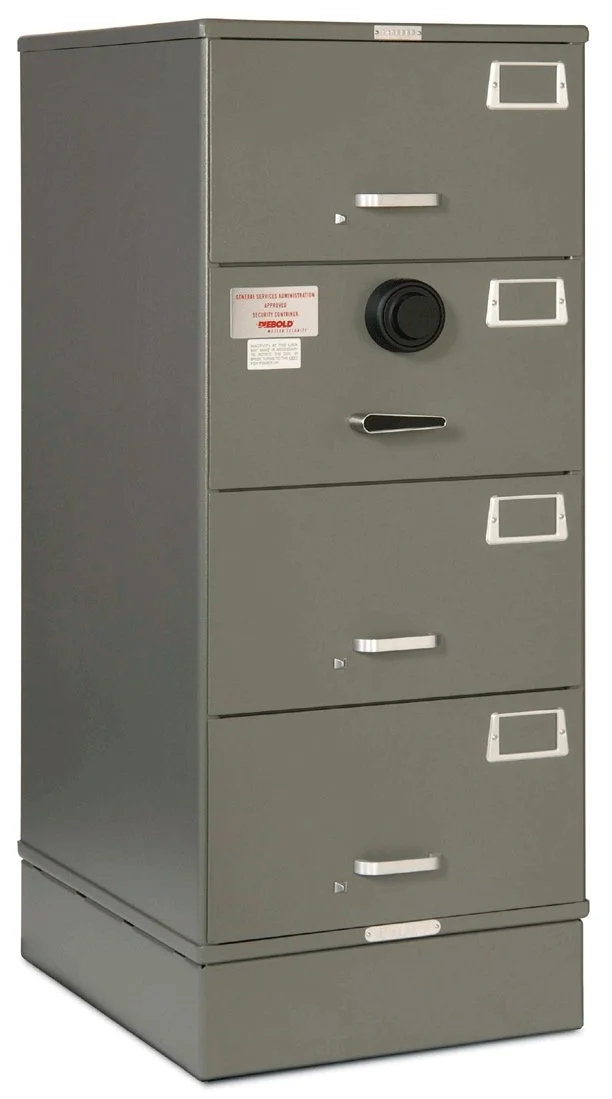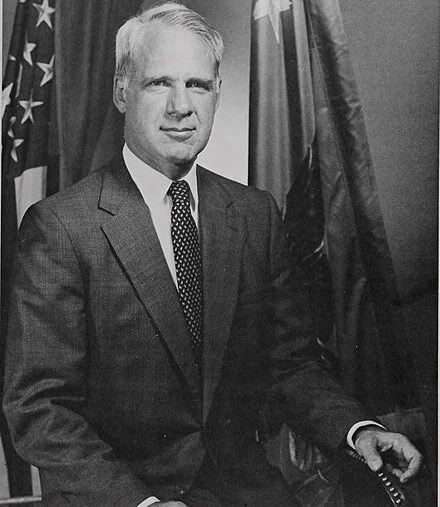
Llewellyn King: Kissinger, Schlesinger and me
Secretary of Defense James R. Schlesinger with President Gerald R. Ford and Secretary of State Henry Kissinger during a briefing at The White House, in November, 1974.
WEST WARWICK, R.I.
Henry Kissinger has died aged 100. I remember him through his archrival, James Schlesinger.
April 24, 1980 was a bleak day for the United States. It was the day we lost helicopters and eight men in the desert during Operation Eagle Claw, the failed attempt to rescue the hostages held by Iran.
Two Washington titans were out of office, chafing at their distance from power, their inability to take action and the attendant sense of impotence. They also disliked — no, hated — each other.
These giants were Henry Kissinger and James Schlesinger. Kissinger had been a national-security adviser and secretary of state. He shaped geopolitical thinking for the latter half of the 20th Century. He informed foreign policy as no other has.
Schlesinger had been the chairman of the Atomic Energy Commission, director of the CIA, secretary of defense and the first secretary of energy.
I had started covering Schlesinger as a journalist when he was at the AEC in 1971, and we formed a friendship which would last until his death.
I created The Energy Daily in 1973 and later Defense Week, high-impact newsletters dominant in their fields at the time. I had a keen desire to know what was going on with the failed rescue attempt. Although Defense Week was weekly, we frequently put out daily supplements. Along with The Energy Daily, these were hand-delivered in Washington. We got the news out fast.
I had helped Schlesinger with the creation of the Department of Energy as a sounding board and, at times, as the public voice of his frustration with the Carter administration — where Schlesinger, a Republican, didn’t always fit.
On that day of fate in the Iranian desert, I called Schlesinger to get the story. He astounded me by telling me that he was in close contact with Kissinger. “Henry has better sources than I do on this,” he said.
I remember that sentence verbatim because it was so extraordinary to hear Schlesinger refer to Kissinger by his first name. I had never heard it and except for that day, when I heard Schlesinger refer to Kissinger as “Henry” all day, I never heard it again. Before and afterwards, it was always just “Kissinger,” often preceded with a derogatory qualification.
“Henry may know.” “I’ll ask Henry.” “Let me see what Henry has heard.” All day Schlesinger had an open line to Kissinger, asking questions on my behalf.
I assumed that the rift between two of the most formidable figures in Washington was bridged. Some said this animosity went back to their time at Harvard. Certainly, it reached its zenith during the Nixon administration when both men were high office-holders with considerable input into national policy.
Later, in 1984, Kissinger published one of the volumes of his memoirs. I asked Schlesinger if he had read the book. (He seemed to read everything.)
He responded with a string of invective against Kissinger. Obscenities often flowed from Schlesinger, but this was epic. So much for first names and respect that one day, that day of entente.
When Kissinger told The Washington Post’s Sally Quinn famously at a party that he was a “secret swinger,” he wasn’t far off. Kissinger loved the social world and his place in it.
By contrast, Schlesinger entertained sparingly at his modest home in Arlington, Va. My wife, Linda Gasparello, and I were there frequently, and it was always takeaway Chinese food and lots of Scotch.
In all the years I knew him, Schlesinger only came to my home once, although I must have gone to his scores of times —especially toward the end of his life when he liked to talk about the British Empire with me and European history with Linda.
That one visit to an apartment I had in the center of Washington wasn’t pure socializing either. The deputy editor of The Economist, the legendary Norman Macrae, was the guest of honor. Schlesinger, then secretary of energy, was keen to meet Macrae and so he and his wife, Rachel, came.
In government, Kissinger thought Schlesinger was too hardline, too reckless in his attitude to the Soviet Union, Iran and, later, Saddam Hussein. Schlesinger thought Kissinger’s reputation was overblown and he enjoyed the machinations of negotiation without regard to the end result.
I never formally met Kissinger. But at a dinner in Washington where Kissinger had spoken and was taking questions afterwards, someone at my table asked me to ask his question, on the grounds that asking questions was my job.
I thought it was a stupid question, but I asked it anyway. Kissinger glowered at me, so everyone could see who had asked the question, and declared, “That is a stupid question.”
Llewellyn King is executive producer and host of White House Chronicle, on PBS. His email is llewellynking1@gmail.com, and he’s based in Rhode Island and Washington, D.C.
Llewellyn King: My adventures with classified documents
In 1983, Sen. Barry Goldwater (R.-Ariz.) reprimanding CIA Director William J. Casey for Secret information showing up in The New York Times, but then saying it was over-classified to begin with.
It is easy to start hyperventilating over classified documents. It isn’t the classification but what is in the documents that counts. Much marked classified is rubbish.
I have been around the classification follies for years. In 1970, I did what might be called a study, but it was just a freelance article on the use of hovercraft by the military. I was paid $250 to write it.
In those days, there was no easy way to copy a document. The standard was to put several sheets of paper in a typewriter with carbon sheets between them.
Like any other journalist, I started by going to the best library I had access to — in this case, The Washington Post library. I read what was available, largely newspaper clipping, and wrote the article.
Arctic, a consulting company, paid me to write it, and I forgot about it. A couple of years later, I wanted the article — probably to use to get other work — and I asked Arctic for it. They said it had been delivered to the Pentagon long since, and I had better ask the commissioning Department of Defense office.
I did that and was told that I couldn’t have the article, nor could I even look at it because it had been “classified” and I didn’t have clearance.
It had gone, like so much else, into the dark underworld of the classified from whence few pieces of paper ever return.
When James Schlesinger became chairman of the Atomic Energy Commission, in 1971, one of the first things he did was to revamp the classification of documents. He told me that the AEC was classifying far more than was necessary and, as a result, the system wasn’t safer but more vulnerable.
His argument was that for classification to work, the people managing classified material had to have confidence that it was truly deserving of secrecy. He directed the declassification of the trivial and increased the security surrounding what was vital.
Schlesinger was succeeded as chairman by Dixy Lee Ray. At the time, I covered the nuclear industry and Ray became a social friend as well as a subject.
Once Ray and I went to dinner at the historic Red Fox Inn in Middleburg, Va. After a swell meal, we walked to her limousine in the parking lot behind the inn. She had something in her briefcase that she wished me to have.
But Ray always had her two dogs with her. One was a huge gray wolfhound and the other was a smaller gray dog, which looked like the wolfhound but was half the size.
The dogs were in the front seat of the car and a high wind was blowing. Ray opened one back door and I opened the other. Then she opened her briefcase and was rifling through the contents — some of which were marked as classified with a telltale, red X — when the big wolfhound jumped onto the back seat. He knocked over the briefcase and the wind blew documents all over the parking lot.
It was a security crisis. Not that Soviet agents were dining at The Red Fox Inn that night, but if any document marked as secret was found and handed to the police, a major scandal would have resulted.
For the best part of an hour, Ray, myself and her driver scoured the parking lot, the grassy areas and the bushes for documents.
In the early morning, I drove back to the inn to make sure we had made a clean sweep. State secrets in the parking lot of a pub make for hot headlines and end careers.
In the age of computers, classified documents — and who knows if they should be marked as such — are much less likely to be put into paper folders.
Once the Congressional Joint Committee, which oversaw the Atomic Energy Commission, held a hearing in its secure hearing room in the U.S. Capitol, where all the documents before the members and the witnesses were marked “eyes only.” The hearing had to be canceled because no one could say anything.
Also, once at one of the major nuclear-weapons laboratories, I deduced what a machine I was told was used for conducting “scientific experiments” really was. The director assured the technician showing it, “Don’t worry, King is too stupid to know what it is.” He was right and another state secret was saved.
Llewellyn King is executive producer and host of White House Chronicle, on PBS. His email is llewellynking1@gmail.com and he’s based in Rhode Island and Washington, D.C.
Federal container for storing classified documents.
Llewellyn King: Lessons from the Energy Crisis to address the COVID-19 challenge
James Schlesinger (1929-2014), the first U.S. energy secretary and a leader in confronting the Energy Crisis of the 1970s.
There are lessons to be learned in the COVID-19 crisis from the Energy Crisis, which broke in the winter of 1973 and extended into the early 1980s. Projections were dire. At a session of the Aspen Institute’s energy section one year, we looked at how the country could deal with an economic downturn to a negative growth rate of 23 percent. Aspen may want to look at that again.
In Washington, first under President Nixon, then under presidents Gerald Ford and finally under Jimmy Carter, there was what might be called mobilization. It had two aspects: one was intellectual and the other was scientific. The brainy one was centered in the Federal Energy Office, which attracted some extraordinarily gifted economists, geologists and managers. The rest of the government, from the Interior Department to the State Department, was also in the game.
Particularly there was mobilization of the system of national laboratories where, to my mind, the scientific muscle of the country could be found then and now. They had been primarily nuclear labs, led by the three big players in the atomic arsenal: Los Alamos, Lawrence Livermore and Sandia.
Everything was tried and not everything worked. Who remembers in situ coal gasification, ocean thermal gradients, magnetohydrodynamics, hot rocks, low-head hydro or wave power?
In the mix were solar, wind and efforts to loosen oil in tight formations. These were the winners, but it was not clear at all then.
Gifted leadership emerged first at the Federal Energy Office, then at the successor to the Atomic Energy Commission, the Energy Research and Development Administration. Under Carter, all the energy agencies were rolled into the Department of Energy with its first secretary, a star in the Washington firmament, James Schlesinger.
That kind of mobilization is needed now, talent plus science.
The national labs, 17 strong, have some biological capability -- several having had some role in the Human Genome Project, and others looking at the treatment of cancer with radiation.
The COVID-19 virus will not be defeated just by medical science but by the whole panoply of science, including what might at first sound like kooky ideas. I recall the derision that greeted solar and wind concepts back in 1974. Now they are mother’s milk in the energy mix.
One of the highest challenges facing hospitals and medical facilities is to save the lives of their staff with superior sanitation of protective gear like respirators, the now well-known N95 masks and the ambient air itself.
I was excited to learn about a McLean, Va.-based company, airPHX, which has an off-the-shelf, air-scrubbing system using a cold plasma as the scrubbing agent. The units are about the size of a computer and each unit – they operate continuously from a three-prong plug — will clean the air of a 15,000-square-foot room, according to the company’s CEO William Pommerening.
The airPHX units, which were developed to combat mold, odors and pathogens in gyms and elsewhere, are in production on a modest scale, but this is set to ramp up with a new contract manufacturer in Tennessee.
Pommerening told me that he believes his machines will effectively destroy the COVID-19 virus both in the air and on surfaces. He said, “We have lab testing showing efficacy on over 30 health care-associated pathogens including bacteria, viruses and mold showing a 4 log [a technical measure in sanitation which equates to 99.99 percent effectiveness] reduction, or greater, in surface organisms in 30 minutes.” This, he said, included testing on a sister virus to COVID-19. For the air, the effectiveness was between 92 percent and 96 percent, he said. New masks are rated at 95 percent, hence their N95 designation.
If this proves out, it will be a boon across the spectrum of indoor trouble spots and will one day have a wide application in workplaces and recreation areas.
In my view, it needs government scientific review to confirm the data. But it is as promising as anything I have heard of, including hydrogen peroxide and ultraviolet light.
The need to be sure is paramount.
Llewellyn King is executive producer and host of White House Chronicle, on PBS. His email is llewellynking1@gmail.com. He’s based in Rhode Island and Washington, D..C.








